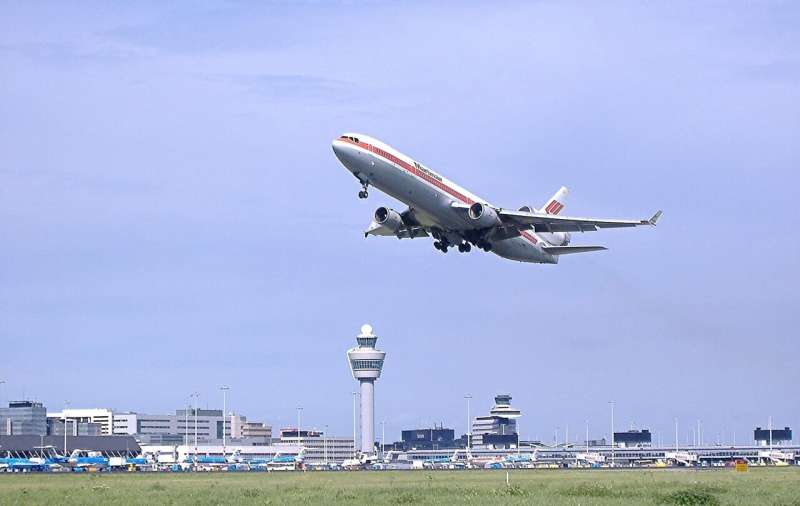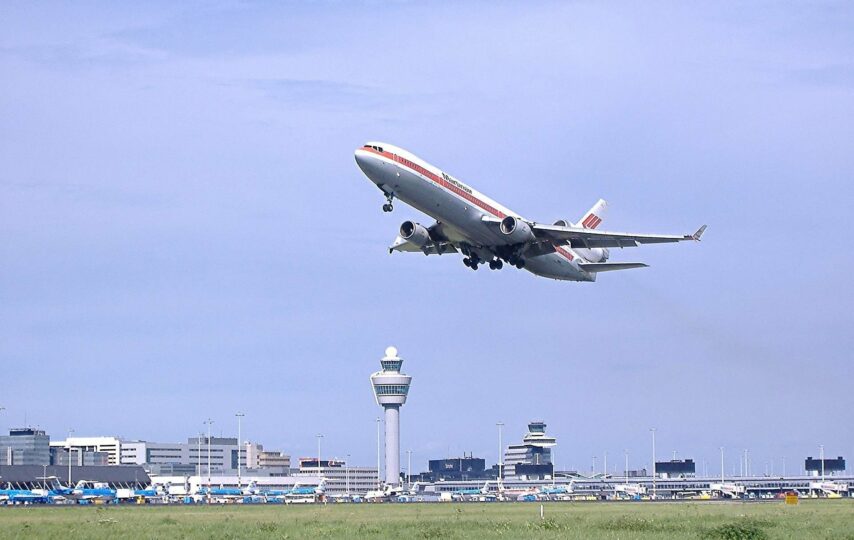[ad_1]

Commercial aviation is critical to the global economy. In 2019, it supported more than 65 million jobs and had a global economic impact of US$2.7 trillion. The COVID-19 pandemic has been unlike any crisis, both in terms of depth and duration, and damaged the aviation industry more than most sectors.
The global economy contracted by more than three percent in 2020—more than enough to cause a severe decline in air transport. The economic downturn was compounded by the closure of international borders and strict quarantine procedures imposed by governments around the world.
As a result, airlines experienced their worst year on record in 2020, with passenger numbers down by 60 percent compared to 2019. The total revenue generated by passengers fell by 69 percent and net losses were more than US$126 billion.
The collapse in traffic was mirrored in the number of flights handled by air navigation service providers. These service providers are responsible for the safety of flights on departure from and arrival at airports and in transit. In North America, losses exceeded US$448 million in 2020.
Our international team, based in the United Kingdom, Ireland and Canada, has spent two years researching the impact of the pandemic and the financing of air navigation services in the airline industry. Our full report found the COVID-19 pandemic severely impacted air navigation service providers, and raises concerns about the industry’s current finance model.
Current airline ‘user-pays’ model
Air navigation service providers are a public good—just like street lighting—that serves the interests of all. Because of this, it’s not possible to prevent people or clients from using the service. It also means that, when the good or service is consumed, it does not reduce its availability to others.
Nonetheless, as airlines and their passengers are the most direct recipients of air navigation services, many air navigation service providers have adopted a “user-pays” model. The user-pays model is an approach to funding where customers pay the full cost of the good or service they consume.
For the user-pays model of air navigation services charges are typically determined by a cost-plus system. The calculation is determined by the air navigation service providers’ costs divided by airline traffic, plus a markup that allows service providers to make a small profit. This model does not reward performance. Otherwise, charges are determined by a pure price cap whereby the regulator sets the price, giving air navigation service providers the incentive to reduce costs.
The purpose of these models is to make air navigation service providers more efficient, but in the absence of competition—service providers are natural monopolies—this system does not work as intended. Some have even pointed to the dangers of air navigation service provider commercialization.
Labor challenges
These models have proved inadequate in the face of a crisis, like the one created by the pandemic. Consequently, staff costs were cut, resulting in job losses, recruitment freezes and a reduction in training. These measures might achieve cost savings in the short term, but they also create a problem for the organization when passengers return and traffic increases.
Many airlines have faced problems in serving returning passengers, leading to the cancelation of flights and chaos at airports, as a direct result of the cuts made in response to the pandemic.
At several European air navigation service providers, the age profile of the workforce also complicates matters. A considerable number of air traffic control officers are approaching retirement as traffic returns to its pre-pandemic level.
It would be disastrous to both stop recruitment and to reduce headcount in such circumstances, because the training of new air traffic control officers is a long process. In fact, rising traffic delays across Europe prior to the pandemic were attributed to the declining number of air traffic control officer trainees.
Problems with ‘user-pays’ model in air navigation
There is a fundamental problem with the user-pays model of air navigation that is disrupting the industry’s recovery from the current crisis. The problem is this: as the airline industry begins recovering from the pandemic, airlines will be expected to pay more for air navigation services, at a time when they can least afford to.
At the same time, air navigation service providers will be expected to invest more in skills and equipment while trying to recover lost and deferred revenue from their exhausted cash reserves. We need only point to the case of WestJet and NAV CANADA to illustrate this point clearly.
NAV CANADA could have raised its rates by 42 percent to cover all its financial needs, but WestJet’s CEO described the price hike as “scandalous” and launched an appeal to Canada’s national transport regulator—Canadian Transport Agency. The agency agreed with NAV CANADA, dismissed WestJet’s appeal and prices increased by almost 30 percent.
The pandemic has demonstrated, beyond doubt, that the user-pays system of air navigation services is neither resilient enough, nor sustainable. Just as a nation’s road network is typically funded by general taxation and road tolls, a similar approach is entirely feasible for air navigation services. General taxation would allow air navigation service providers to fund minimum level of service and staffing levels.
New report outlines how civil aviation could navigate post-pandemic funding
The Conversation
This article is republished from The Conversation under a Creative Commons license. Read the original article.![]()
Citation:
Air traffic control funding model ravaged by pandemic as industry struggles to recover (2022, July 1)
retrieved 1 July 2022
from https://techxplore.com/news/2022-07-air-traffic-funding-ravaged-pandemic.html
This document is subject to copyright. Apart from any fair dealing for the purpose of private study or research, no
part may be reproduced without the written permission. The content is provided for information purposes only.
[ad_2]







